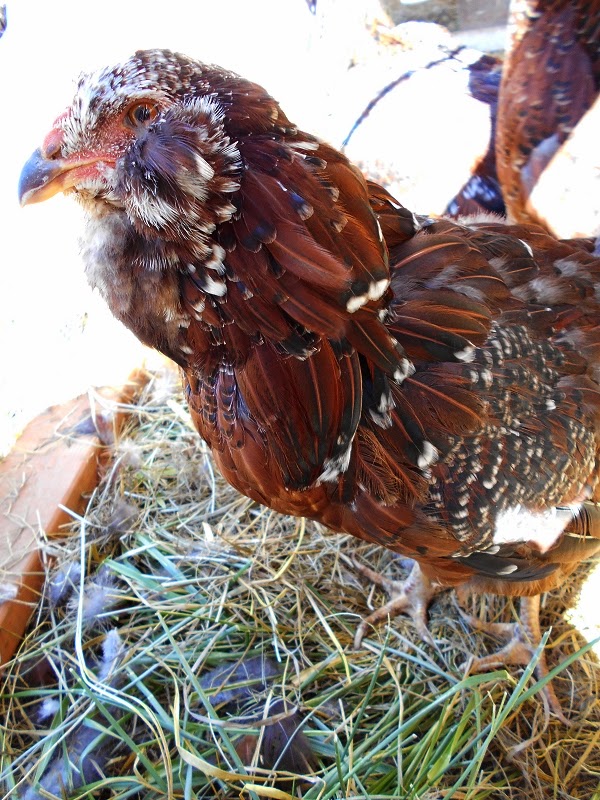Now that winter is officially in session, the fairly warm temps have dropped into freezy, frosty weather. Sunday, we received a bucket load of hail out of the sky. The new hens, not having experienced this before were perplexed with the little white ice pellets. They kept trying to eat the stuff. The hail on the ground stayed the rest of the day since it was not warm enough to melt quickly.
Then Monday, we had a beautiful warmer day, with sunshine and only a mild breeze all day until the cold settled in as the sun went down. The East winds picked up over night. Now we have real biting cold with east winds whipping through making it feel even colder. L and I picked up another outside extension cord to add a couple of small heat lamps under the waterers. We are trying to get by with just using regular light bulbs, plug in sockets, and lightweight extension cords placed inside of those hollow cement building blocks with the metal waterers setting on top of the block. The light inside heats the block from the inside, keeping the base of the waterer warmer. So far, it is a whole lot cheaper than two more of those of those fancy, eighty dollar heating pads. We keep these outside, far away from the coop to prevent any accidental fires.
Now get this.... The irony of it all. Remember, we had planned on putting the older girls into our freezer for some nice chicken soup on these cold winter days. The three older gals are each laying eggs, almost daily now. All month, we begin receiving at least one to two eggs per day (about ten per week), which was more than what we were getting the month before. We received two eggs from them on Sunday, three on Monday and three more today (Tuesday). Go Figure!
In actuality, all the hens are laying better now that it's been cooler. The daily production has doubled to approximately six to eight eggs per day. We have had a few days over the past week with as many as nine eggs on one day and ten eggs a few days later. And with the super cold temps, we have been checking for eggs more often so that the eggs don't freeze and crack in the nesting boxes.
I had mentioned that we were going to split up the newer hens into two groups because we thought if we did this, it would reduce the number of eggs lain in the coop. We have three small coops going at once to ensure that each coop is easy to move and allows the hens to have plenty of access to grass, even though, at this time, it is a bit frosty. We have decided to name the coops as One, Two and Three based on when the coops went into action. Coop One has the older hens from last year. Coop Two has four hens from the "new" flock and coop Three has three of the new flock. Coop Two obviously has two hens who prefer to lay their eggs in various coop corners. Those hens have not changed their odd egg laying behavior. On the other hand, in coop One, the older hens like to squeeze together into a nesting box rather than wait or use the other available box. Obviously, we have some quirky birds... LOL
We definitely need to put out a sign that we have fresh eggs to sell, because our customers are not currently purchasing enough to keep up with the supply. Or we need to start freezing the eggs for later use. I read that we can crack open the eggs, then kind of whip the yolks and whites up like we are going to scramble them, add a little salt and pour the mix into ice cube trays. Once they freeze, pop the cubes into a freezer bag and they should last in the freezer, safely, for at least six months to a year. But, as soon as the egg cubes thaw, the mix should be used within twenty-four hours. hmmmm... that certainly would help tide us over during the molting season next year.





















































